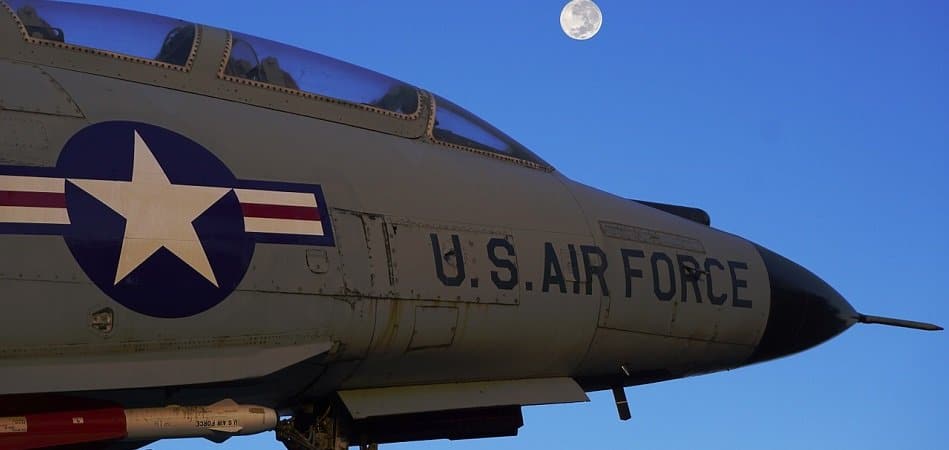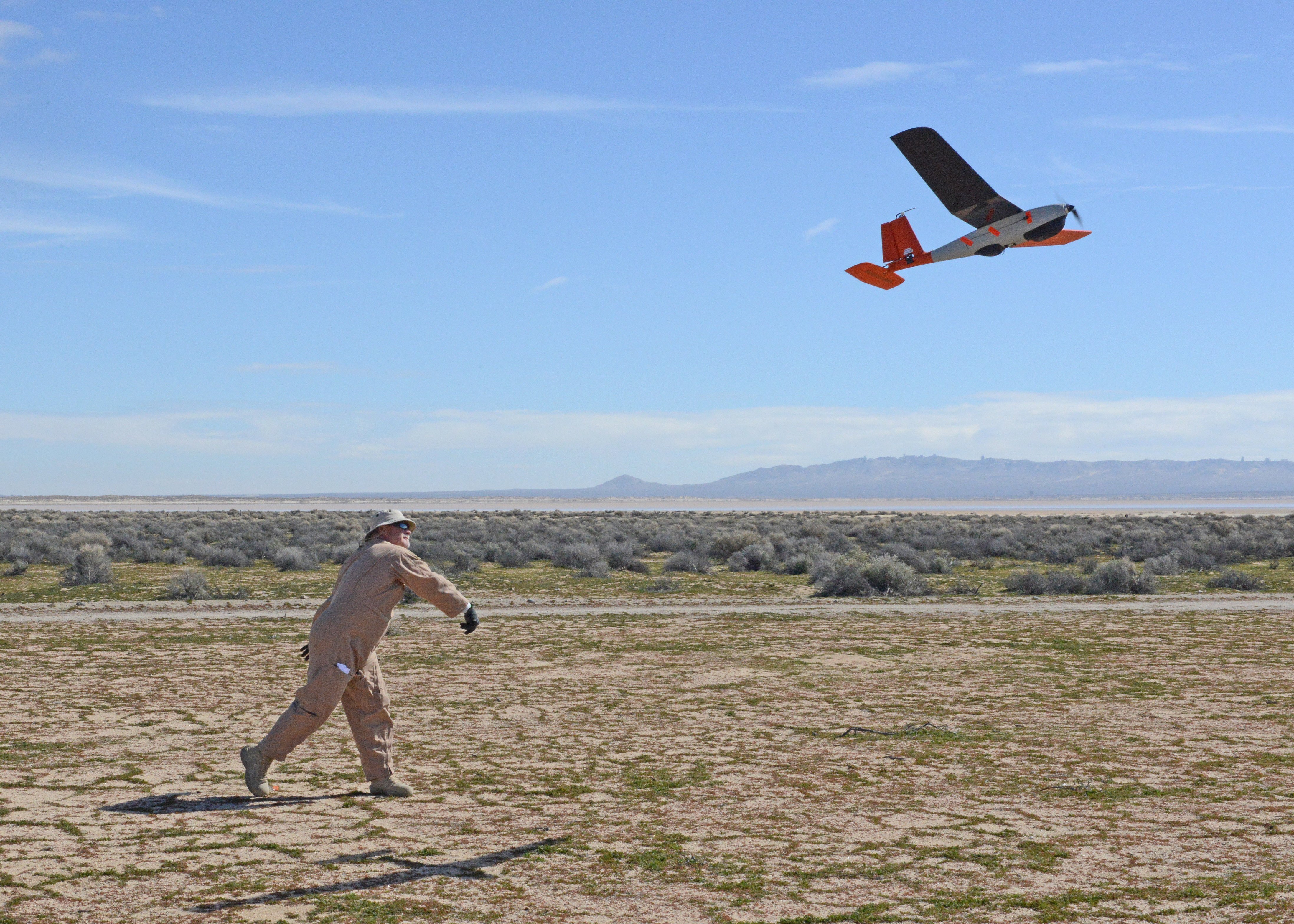
Government contracts are notoriously hard to acquire. It takes many months of painstaking work to get through the gamut of regulations that weigh about 8.5 lb when printed out. Startups and small companies, including those developing artificial intelligence, often do not have the resources to compete for a share of this market. The US Air Force is changing that by streamlining the process in what it calls Pitch Days, the first of which was on March 6 and 7, 2019 in New York.
The process is quite simple: invite companies to submit applications a month before the Pitch Day, vet the companies, choose the promising ones, and let them make their pitch on the day. More than 400 companies applied for this inaugural event, and 59 made the cut. Only 51 companies across 15 industries received Phase I Small Business Innovation Research (SBIR), but it only took minutes for these companies to receive their initial funding. The total for the day was about $3.5 million paid through a credit card.
The total contract value awarded for that week (including 122 Phase I SBIR contracts and 69 Phase II SBIR contracts awarded prior to Pitch Day) would eventually fund $75 million for 242 contracts. Most award recipients had little or no previous experience working with the government.
The success of this initiative prompted the Air Force to plan more Pitch Days. The next one will reportedly focus on space.
The dramatic shift in acquisition policies is particularly important to AI companies, which are often the youngest and smallest of startups today with little or no traction in government work. Under normal circumstances, these small AI companies would not get within whistling distance of a government audience, let alone a contract.
Vice Chief of Staff of the Air Force Gen. Stephen W. “Seve” Wilson stated: “Events such as Pitch Day allow us to connect small businesses to the operator, then to a real problem and bring those two together to build a partnership.”
The mission of the Joint Artificial Intelligence Center (JAIC), launched in June 2018, “is to transform the DoD by accelerating the delivery and adoption of AI to achieve mission impact at scale…use AI to solve large and complex problem sets that span multiple services.”
However, JAIC Director Lt. Gen. John N.T. “Jack” Shanahan stated that the exponential advancements in AI demanded a more agile approach to acquiring and developing AI technology. He said that there were “too many pilots, too many prototypes, too many research-and-engineering efforts that are just not getting out into operational” stages. Currently, the DoD has as many as 500 AI projects.
The Air Force believes that JAIC provides a venue through which the military can collaborate on and share AI initiatives. However, the service took it a step further by creating its own AI team headed by Capt. Michael Kanaan. According to Kanaan, the 22-strong team will focus on “AI plans, AI application understanding from legal to personnel to logistics and maintenance … and all the way into intel operations, assessment, the whole gamut.” He further plans to encourage the acquisition of computer coding skills within the service through the Air Force Computer Language Initiative.
Another AI-related initiative by the Air Force is the Air Force Cognitive Engine (ACE), a program under the Autonomy Capability Team 3 led by Maj. Michael Seal. He describes ACE “…ultimately a software platform. We’re trying to create a software ecosystem to hook up the core infrastructures that are required for successful AI development – that’s people, algorithms, data, and computational resources.”
All these efforts are in accordance with the objectives of the recently unveiled Science and Technology Strategy 2030 by the Air Force Research Laboratory, although much of what they are actually working remains classified. According to Kanaan, “I can’t say what they’re doing but we’ve created that environment to build those applications.”
Nevertheless, information about some developments with AI technology in the Air Force is available. These are in the following areas:
- Autonomous UCAVs
- Smarter Maps
- Pilot Training
- Physical Conditioning
- Space Situational Awareness
- Cybersecurity
We begin our exploration of AI in the Air Force with autonomous UCAVs.
Autonomous UCAVs
A new-not new concept in the Air Force is a human-nonhuman team-up in the sky with the use of unmanned combat air vehicles (UCAV). Dubbed the “loyal wingman” or force multiplier concept by Boeing Australia and just recently unveiled, a similar idea has been in development for over two years at the AFRL through military contractor Kratos Unmanned Systems Division.
However, while the Valkyrie is an unmanned vehicle capable of carrying weapons and doing surveillance, a human operator on the ground or in the air still controls it. The next step is for a UCAV that is autonomous, and that is precisely what is in the works over at AFRL with the Skyborg program.
The idea is to use AI to bring the loyal wingman up another level by giving it the ability to train alongside human pilots, to learn and anticipate their needs, and to assist them in identifying and responding to threats by recommending actions during combat. Since Skyborg involves autonomous drones, parallels drawn to the controversial Project Maven is to be expected. However, the request for information for Skyborg notably does not involve surveillance of individuals.
Dr. William Roper, Assistant Secretary of the Air Force (Acquisition, Technology, & Logistics), announced the program on March 13, 2019. The request for information from the AFRL released just two days after the announcement includes this explanation:
The primary goal of the Skyborg program is to deploy a modular, fighter-like aircraft that can be used to quickly update and field iteratively more complex autonomy to support the warfighter.
Aviation Week disclosed that the plan is for the Skyborg program to develop an autonomous fighter jet prototype by 2023. When the AI is ready, it might go into the XQ-58 Valkyrie, or the QF-16 full-scale aerial target (FSAT). Another possible scenario is to integrate Skyborg into a manned fighter jet.

In a parallel move, the 412th Test Wing’s Emerging Technologies Combined Test Force, led by Capt. Riley Livermore, did a test of its autonomous flight system using the Testing of Autonomy in Complex Environments (TACE) software developed by John Hopkins University.
The test was to see if TACE could effectively mediate between the AI and autopilot without interference from a human. Riley states:
TACE is a crucial first step in providing a safe, rapid and effective tool for evaluating these systems. The current use case for autonomous systems in the Air Force is as a loyal wingman. The concept there being an autonomous wingman who can cooperatively work with and help a manned aircraft through a variety of scenarios.
Smarter Maps
Maps are definitely an essential tool in the military, and perhaps more so for the Air Force, which typically covers great distances quickly. Software that could process images quickly and extract more information in map form is definitely valuable. CrowdAI claims it can give the Air Force this capability, which earned it one of the 51 slots for Phase 1 SBIR during the inaugural Pitch Day.
CEO Devaki Raj pointed out, “The Air Force has access to a lot of data, both commercial as well as U.S. government satellite data, but the thing is, it takes crowds of analysts to go through that imagery, and that’s where our AI comes in.” During her pitch, she demonstrated how AI could help the Air Force cope with changing landscapes.
Pilot Training
The Air Force purportedly has a shortfall of 2,000 pilots. To meet the demand, it issued an open challenge to all takers to come up with a way to “train new aviators faster but with the same quality.” Out of the 150 proposals submitted, one company succeeded in snagging the top prize: Nothing Artificial Inc. (NAI).
It was not the first time the Air Force tried something new with its pilot training program. It graduated its first batch of pilots after 6 months of training using collaborative learning and flight simulators under the Pilot Training Next program. Both instructors and students believe the new methods are working, but the Air Force wants to improve on it.
The role of NAI is to provide cognitive and performance assessment and enhancement using its flagship product NeuroTracker. Below is a 4-minute video demonstrating the uses of this platform:
According to the science, NeuroTracker should enable trainee pilots to improve their cognitive and physical performance under stressful conditions. It should also inform instructors on how to modify the training program to get better results from students in a shorter time.
HTX Labs, on the other hand, will provide student pilots with immersive technology using AI. The contract is for simulating real-world environments using its EMPACT Virtual Reality (VR) platform. HTX Labs had previously worked with the Air Force in the first iteration of the experimental pilot training program. Below is a 2:25-minute video demonstrating a virtual reality training program:
Physical Conditioning
Soldiers have to be at peak physical and mental condition for maximum effectiveness. This is of particular concern for the Air Force as pilots are under a lot of stress during combat and must be ready at all times to make quick decisions and take immediate action.
The Defense Department and the AFRL introduced the equipment and platform developed by IncludeHealth in the Signature Tracking for Optimized Nutrition and Training (STRONG) lab. A limited number of participants participated in the pilot study.
Below is a 2-minute video showing the features of one of the company’s pieces of equipment, The Access Strength:
This is Phase I of the SBIR grant in developing customized fitness protocols for soldiers using data analytics. If successful, Phase II and III will expand the study to include all members of the service eventually.
Dr. Adam Strang, STRONG Director, explained:
We are interested in applying IncludeHealth’s technology to develop and validate next-generation, mission-specific fitness protocols resulting in objective, data-driven, and evidenced-based duty qualifying scores. We also see powerful applications to remotely issue individualised training and rehab protocols across the Air Force network without the need for human proxy.
Space Situational Awareness
Data overload has long been the bane of the military, and the Air Force is no exception. With data pouring in from multiple sources such as drones and satellites, putting it to good use continues to be a challenge. To help its decision makers use this flow of data effectively, the Air Force contracted Slingshot Aerospace to retrofit its Orbital Atlas product to improve space situational awareness. In other words, the Air Force wants to use data analytics to make sure the space around the US is secure, and it is willing to pay for it.
Cybersecurity
In the new spirit of collaboration and accessibility, the Air Force is preparing for data migration to the cloud. However, security is always a problem, more so when the cyber attacks have become as sophisticated as cybersecurity. In an interview with Securonix chief scientist Igor Baikalov, he described the problem concisely:
The variety of [cyber] attacks, tens of thousands of variants every day…that’s where the rules-based, signature-based systems are a problem.
The Air Force is taking steps to ward off sophisticated AI-powered cyber attacks on several fronts. One way there are doing this is by working with Cisco to implement zero-trust and multi-mode authentication solutions, fighting fire with fire.
Below is a 4-minute video explaining the zero-trust model of Cisco:
Concluding Thoughts
The US Air Force is clearly invested in a practical approach to advanced technology, particularly in artificial intelligence and machine learning. It wants it fast, and it wants it cheap, which are both good reasons for fast-tracking contracts with companies that have products it can already use.
While most of the products and projects described in this article are barely out of the starting gate, it will be interesting to see just how fast they can get to the operational stage. If the Air Force can keep up the steam, it is likely to be a short race.
Header Image Credit: josephsteinberg







